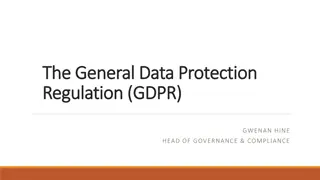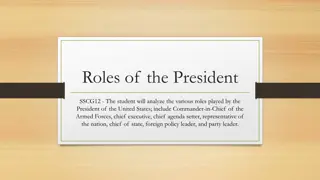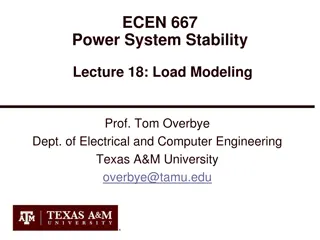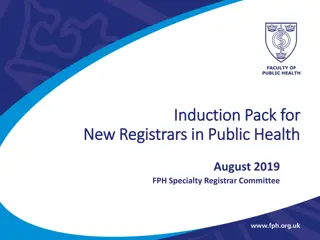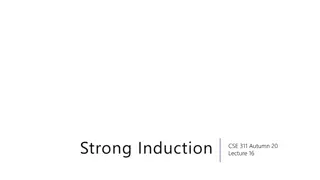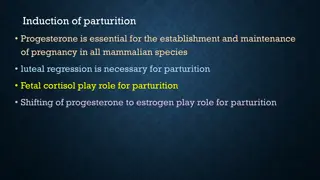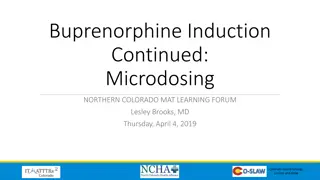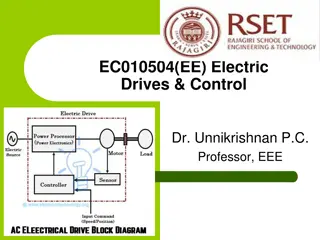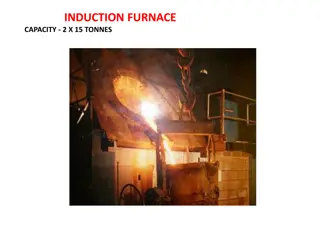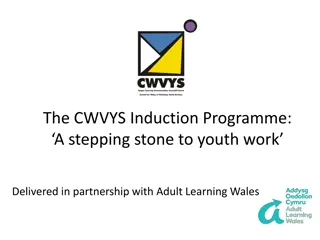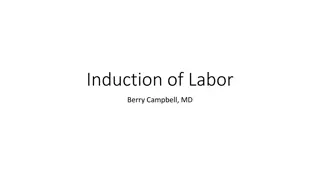Chief Officers Public Protection Induction Resource
"Explore the strategic approaches to safeguarding individuals in communities, understanding roles and responsibilities of Chief Officers, and navigating legislation and policies. Delve into public protection contexts, national frameworks, Scotland's health priorities, and the National Trauma Transformation Programme. Learn about a whole system approach and media strategies for high-profile cases."
Uploaded on Sep 11, 2024 | 0 Views
Download Presentation

Please find below an Image/Link to download the presentation.
The content on the website is provided AS IS for your information and personal use only. It may not be sold, licensed, or shared on other websites without obtaining consent from the author. Download presentation by click this link. If you encounter any issues during the download, it is possible that the publisher has removed the file from their server.
E N D
Presentation Transcript
Chief Officers Public Protection Induction Resource
Introduction Introduction Public protection is a term used to encompass the many different strategic approaches and responses to keeping children and adults safe in our communities. Purpose of these slides Purpose of these slides To point you to legislation, guidance, and policies relevant to public protection in a national context. To offer specific detail on your role and responsibility as a Chief Officer.
Content Content Public Protection in Context Child Protection Adult Support & Protection Multi-Agency Public Protection Arrangements Alcohol & Drugs Violence Against Women & Girls Suicide Prevention
Public Protection in context Public Protection in context National Performance Framework Community Planning Partnerships Integration Joint Boards
Scotlands public health priorities Scotland s public health priorities A Scotland where we live in vibrant, healthy and safe places and communities. A Scotland where we flourish in our early years. A Scotland where we have good mental wellbeing. A Scotland where we reduce the use of and harm from alcohol, tobacco and other drugs. A Scotland where we have a sustainable, inclusive economy with equality of outcomes for all. A Scotland where we eat well, have a healthy weight and are physically active.
A Whole System Approach A Whole System Approach
National Trauma Transformation Programme Highlights the essential core knowledge and skills needed by all tiers of the Scottish workforce to support people affected by trauma. Ensures that the needs of children and adults affected by trauma are recognised, understood and responded to sensitively and effectively. Ensures timely access to effective care, support and interventions for those who need it. National Trauma Transformation Programme Pledge of Support
Responding to Potential Media Interest Responding to Potential Media Interest When public protection cases are likely to attract high public and media interest, the Chief Officers Group and appropriate local strategic group should prepare a media strategy, allowing for a range of scenarios. These groups should consider the impact of any media attention on staff and families, advising and supporting them as much as possible.
Public Protection: the role of Chief Officers Public Protection: the role of Chief Officers
Child Protection Child Protection content Development of policy and guidance on child protection Key legislation on child protection Definition of child protection Getting it Right for Every Child (GIRFEC) The Promise Child Protection Networks Child Protection Committees (CPCs) Chief Officers role in child protection Child Protection Committees undertaking Learning Reviews Child Death Reviews Joint inspections of services for children in need of care and protection The voice of children and young people Data Quality indicators and reflective questions content
Development of policy and guidance on child protection Development of policy and guidance on child protection 1991 - Child Protection Committees established 1998 - Protecting Children: a shared responsibility. Guidance on Inter-agency Co-operation, The Scottish Office 2002 - It s everyone s job to make sure I m alright - Report of the Child Protection Audit and Review, Scottish Executive 2006 - Getting it Right for Every Child (GIRFEC), Scottish Government 2014 - National Guidance for Child Protection in Scotland (to be updated in 2021), Scottish Government 2015 - National Guidance for Child Protection Committees for Conducting a Significant Case Review (to be replaced with National Learning Review Guidance in 2021), Scottish Government 2017 - Child Protection Improvement Programme, Scottish Government 2019 - Protecting Children and Young People: Child Protection Committee and Chief Officer Responsibilities, Scottish Government 2019 - A quality framework for children and young people in need of care and protection, Care Inspectorate 2020 - The Promise, Independent Care Review 2020 - Coronavirus (COVID-19): supplementary national child protection guidance, Scottish Government 2021 - National Guidance for Reviewing and Learning from the Deaths of Children and Young People, Healthcare Improvement Scotland & The Care Inspectorate 2021 - National Guidance for Child Protection in Scotland 2021, Scottish Government 2021 - National Guidance For Child Protection Committees Undertaking Learning Reviews, Scottish Government 2022 - Getting it Right for Every Child Practice Guidance, Scottish Government 2023 - Practitioner Guidance Criminal Exploitation, Scottish Government
Key legislation on child protection Key legislation on child protection United Nations Convention on the Rights of the Child 1989 Children (Scotland) Act 1995 Children s Hearing (Scotland) Act 2011 Children & Young People (Scotland) Act, 2014 Age of Criminal Responsibility Act (2019) Equal Protection from Assault (Scotland) Act 2019.
Definition of child protection Definition of child protection Child protection refers to the processes involved in consideration, assessment and planning of required action, together with the actions themselves, where there are concerns that a child may be at risk of harm. Child Protection Guidance provides overall direction for agencies and professional disciplines where there are concerns that a child may be at risk of harm. Child Protection Procedures are initiated when Police, Social Work or Health professionals determine that a child may have been abused or may be at risk of significant harm. (National Guidance for Child Protection in Scotland 2021)
Getting it Right for Every Child ( Getting it Right for Every Child (GIRFEC GIRFEC) ) Child centred and rights-based approach. Begins with universal services and should ensure proportionate support on a continuum of prevention and protection. Children s wellbeing is promoted by considering eight domains https://www.gov.scot/policies/girfec/wellbeing-indicators-shanarri/ Multi-agency partnership planning with children and families is key. Where appropriate support will be delivered via a child s plan. The National Practice Model is a tool for practitioners to help them to meet the GIRFEC core values and principles in an appropriate, proportionate and timely way.
The Promise The Promise The Independent Care Review Team aimed to identify and deliver lasting change in Scotland s care system and leave a legacy that will transform the wellbeing of infants, children and young people. The review published their findings in the Promise in 2020: - the Scottish Government has committed to all actions - The Promise Scotland established as an organisation in 2021 - Keeping The Promise Implementation Plan published 2022
Networks Networks
Functions of Child Protection Committees Functions of Child Protection Committees Continuous improvement Public information, engagement and participation Strategic planning and connections Annual reporting on the work of the CPC (Protecting Children and Young People: Child Protection Committee and Chief Officer Responsibilities, Scottish Government, 2019)
CPCs: the role of Chief Officers (slide 1) CPCs: the role of Chief Officers (slide 1) Individually and collectively, demonstrating leadership and accountability for child protection work and its effectiveness on behalf of their agencies / bodies including the effectiveness of the CPC itself. Agreeing the CPC Annual Report and Improvement/Business Plan, including operational priorities for protecting children, and ensure the allocation of resources to the CPC Considering performance reports that include qualitative and quantitative data on the effectiveness of services in improving the experiences of, and outcomes for, children in need of protection. Ensuring that the CPC links to other planning fora under their control, in particular the structures for integrated children s services planning. Agreeing the constitution for the CPC, including the delegating of roles and responsibilities, to take forward multi-agency issues in respect of child protection on their behalf and invest it with the authority to do so.
CPCs: the role of Chief Officers (slide 2) CPCs: the role of Chief Officers (slide 2) Agreeing the agencies, bodies or organisations to be represented at their CPC. Considering the development of a communications strategy in order to raise awareness of both the role of the CPC and the COG locally. Appointing, or agreeing the appointment of, the chair of the CPC and in doing so ensuring that the chair has the time, resources and dedicated professional and administrative support to properly fulfil the role. Appointing representatives from their own agencies / bodies to the CPC with the appropriate authority and responsibility to best take forward the functions required. Inviting nominations from other agencies, bodies or organisations to be represented on the CPC. Agreeing reporting mechanisms with elected members and board members that cover the work of their CPC and the implications for their local authority area. This will include at least annual reporting. (Protecting Children and Young People: Child Protection Committee and Chief Officer Responsibilities, Scottish Government, 2019)
Learning Reviews: the role of Chief Officers (slide 1) Learning Reviews: the role of Chief Officers (slide 1) The overall purpose of a Learning Review is to: Bring together agencies, individuals and families in a collective endeavour to learn from what has happened in order to improve and develop systems and practice in the future and thus better protect children and young people. The process is underpinned by the rights of children and young people as set out in the United Nations Convention on the Rights of the Child (UNCRC) (National Guidance for Child Protection Committees Undertaking a Learning Review, 2021).
Learning Reviews: the role of Chief Officers (slide 2) Learning Reviews: the role of Chief Officers (slide 2) The CPC, on behalf of the Chief Officers Group, decides whether a Learning Review is warranted and agrees how the review is conducted. The Chief Officers Group should be informed of the recommendation and of the subsequent decision about whether to proceed with a Learning Review or the reasons for not doing so. A supportive Chief Officers Group is an essential enabling factor in ensuring that Learning Reviews are effective and fulfil their purpose. Chief Officers, who are accountable for all the work of the Child Protection Committee, must promote and support national learning and improvement activity in the context of Learning Reviews. Once a Review is concluded, the Chief Officers Group should consider all findings and recommendations. The Chief Officers Group, informed by a recommendation in this regard from the Child Protection Committee, will decide if and when to publish the report.
The role of the Care Inspectorate in Learning Reviews The role of the Care Inspectorate in Learning Reviews In relation to learning reviews, the Care Inspectorate: Is the central collation point for the notification of decisions for proceeding or not proceeding to a learning review taken by CPCs to better understand the rationale. Acts as a central collation point for all learning reviews completed across Scotland at the point at which they are concluded. Identifies themes, aspects of good practice and learning to share nationally. To contribute to continuous improvement of child protection practice at a local level, the Care Inspectorate: Reviews the rationale for the decisions about learning reviews to maintain an overview and understanding of the decision-making processes and identify any learning at the initial information gathering stage. Reviews each learning review and provides feedback to Chief Officer Groups and Child Protection Committees on the quality of the learning review report with reference to the National Guidance.
Child Death Reviews Child Death Reviews The National Hub for Reviewing and Learning from the Deaths of Children and Young People review the death of every child in Scotland in order to: develop methodology/documentation to ensure all deaths of children and young people that are not subject to any other review, are reviewed through a high quality and consistent review process, improve the quality and consistency of existing reviews. improve the experience and engagement with families and carers. channel learning from current review processes across Scotland that could direct action to help reduce preventable deaths.
National Child Death Review Hub National Child Death Review Hub role of Chief Officers Officers role of Chief NHS boards working in partnership with local authorities should have the following in place to support governance: a lead for reviewing and learning from the deaths of children and young people, and a governance group (or designate an existing group), working in partnership with local authorities, with responsibility for ensuring that every child and young person in each NHS board area receives a quality review in the event of their death and that learning is captured and shared from reviews.
Joint inspections of services for children in need Joint inspections of services for children in need of care and protection of care and protection At the request of Scottish Ministers, the Care Inspectorate lead joint inspections across a CPP area of services for children and young people in need of care and protection provided by a range of services including from social workers, health visitors, police officers, teachers and the third sector. Key to an inspection is understanding how those services are delivered from the perspective of children, young people, families and carers who use them. Inspectors look at the recognition of and response to child protection concerns and also how well leaders fulfil their collective responsibilities for child protection as well as the extent to which CPPs are impacting upon the wellbeing and life chances of children and young people in need of care and protection. Along with the Care Inspectorate, inspection teams include representatives from Healthcare Improvement Scotland (HIS), Education Scotland (ES) and Her Majesty s Inspectorate of Constabulary in Scotland (HMICS), as well as young inspection volunteers and associate assessors. The Care Inspectorate also produce periodic overview reports which summarise the findings and learning across a number of inspections. (For more information about joint inspections visit The Guide)
Human trafficking Human trafficking The Human Trafficking and Exploitation (Scotland) Act 2015 introduced new offences, gave police and prosecutors additional powers to tackle traffickers, raised the maximum penalty for trafficking to life imprisonment, and placed support for victims on a statutory basis. Services should treat all child trafficking and exploitation as a form of abuse which causes significant harm. When the trafficked individual is a child, a child protection response is required, and an inter-agency referral discussion between core agencies should be undertaken in line with National Guidance for Child Protection in Scotland 2021
The voice of children and young people The voice of children and young people The Protecting Children s Charter (2004) reflects the voice of children and young people and what they feel they need, and should be able to expect, when they have problems or are in difficulty and need to be protected. The Promise Composite stories are 12 composite animated stories drawn from Independent Care Review team s discussions with children and young people, their families and carers about their experiences of care. The Dundee Champion s Board Experiences in Care film shows children and young people s views about problems that meant they couldn t live with their parents.
Local child protection data template Local child protection data template EXEMPLAR TO BE POPULATED BY LOCAL AREA Number of children subject to initial and pre-birth child protection case conferences Number of initial and pre-birth child protection case conferences Conversion rate (%) of children subject to initial and pre-birth child protection case conferences registered on child protection register Number of new child protection registrations Number of child protection re-registrations (within 3, 6, 12 and 24 months of deregistration) Number of children on the child protection register Number of children de-registered from the child protection register
Quality indicators and reflective questions Quality indicators and reflective questions A quality framework for children and young people in need of care and protection How well are local strategic groups (for example Community Planning Groups, Children's services planning, Corporate Parenting Boards and the Child Protection Committee) working together to support children, young people and families at an early stage and to tackle issues such as child poverty? How aligned is local strategy to the calls to action from the PROMISE Report from the Independent Care Review? Do we have the necessary structures in place to meaningfully listen to children, young people and families with lived experience? What is the Minimum Dataset telling the Chief Officers Group about local patterns, support to families and resource allocation in child protection?
Adult Support & Protection (ASP) Adult Support & Protection (ASP) content content Development of guidance and policy on adult support and protection Key legislation on ASP Definition of adult support and protection Adult Support and Protection Networks Adult Support and Protection Committees Chief Officers role in adult support and protection Protection orders Significant Case Reviews Transitions and cross-cutting agendas Data Quality indicators and reflective questions
Development of guidance and policy on ASP Development of guidance and policy on ASP 1997 - Report on Vulnerable Adults, Scottish Law Commission. Recommendations on protecting vulnerable adults. 2002-04 - Borders Vulnerable Adult Case. Prompted legislation to protect vulnerable adults. 2004 - Shift from the term vulnerable to adults at risk of harm. 2006 - Policy Memorandum, Scottish Government. To strengthen expectations that allegations of abuse would be taken seriously and pursued stringently. 2013 - National Priorities (2013), Scottish Government. Highlighted issues with implementing legislation. 2014 - The Adult Support and Protection (Scotland) Act 2007, Code of practice (2008/2014), Scottish Government. Update to reflect practice developments in line with the legislation. 2017 - Health & Social Care Standards, Scottish Government. 2019 - Adult Support & Protection Improvement Plan 2019-2022, Scottish Government. 2022 - Adult Support and Protection (Scotland) Act 2007 Code of Practice Establishes a set of principles to guide interventions, Scottish Government 2022 - Adult Support and Protection supporting documents, Scottish Government. Update to reflect practice developments in line with the legislation
Key Legislation on Adult Support & Protection Key Legislation on Adult Support & Protection Adult Support and Protection (Scotland) Act 2007 Adults with Incapacity (Scotland) Act 2000 Mental Health (Care & Treatment) (Scotland) Act 2003 Health (Tobacco, Nicotine etc. and Care) (Scotland) Act 2016 - Part 2. Duty of Candour and Part 3. Ill treatment and Wilful Neglect NHS and Community Care Act 1990
Definition of Adult Support & Protection Definition of Adult Support & Protection Adults at risk of harm are adults who: are unable to safeguard their own well-being, property, rights or other interests, are at risk of harm, and because they are affected by disability, mental disorder, illness or physical or mental infirmity, are more vulnerable to being harmed than adults who are not so affected. An adult is at risk of harm if: another person's conduct is causing (or is likely to cause) the adult to be harmed, or the adult is engaging (or is likely to engage) in conduct which causes (or is likely to cause) self-harm.
Adult Support and Adult Support and Protection networks Protection networks
Adult Support and Protection Committees ( Adult Support and Protection Committees (APCs APCs) ) Councils have a statutory duty to establish APCs. Local Authorities must appoint a Convenor independent of the LA to chair the APC, author the Biennial Report and attend key national fora e.g., Scottish Adult Support and Protection Independent Conveners Association. APCs have a significant role in ensuring cooperation and communication within and between agencies to promote appropriate support and protection for adults at risk of harm. The relationship between APCs, Conveners and COGs has been articulated in the 2022 Review of Guidance for Adult Protection Committees.
Adult Support and Protection Committees ( Adult Support and Protection Committees (APCs APCs) ) Functions of APCs Reviewing procedures and practices in relation to adult protection Improving skills and knowledge Improving co-operation between its membership agencies Providing information and advice Making proposals Coordination with Child Protection Committees and MAPPA
Chief Officers role in Adult Support & Protection Chief Officers role in Adult Support & Protection Committees Committees Individually and collectively, are responsible for the leadership, direction and scrutiny of adult protection services and public protection more broadly. Ownership and accountability by Chief Officers is required to ensure that protecting adults at risk of harm remains a priority within and across agencies.
Protection orders Protection orders Protection orders provide a statutory tool for an applicant to intervene to support and protect an individual at three levels: oAssessment order: allows conduct of an interview or medical examination in private. oRemoval order: allows the council to move the adult at risk to assess the situation and to protect him/her. oBanning orders and temporary banning orders: ban the subject from a specified place. Application may only be made for any of the orders where the adult is at risk of serious harm.
Initial and Significant Case Reviews (ICRs & SCRs) now ASP Learning Reviews Initial and Significant Case Reviews (ICRs & SCRs) now ASP Learning Reviews The APC has general oversight to ensure processes are in place and reflect national guidance for Learning Reviews. A Framework has been published by Scottish Government to support a consistent approach to conducting adult protection SCRs and improve the dissemination and application of learning both locally and nationally. An Adult Support and Protection Learning Review is a means for public bodies and office holders with responsibilities relating to the protection of adults at risk of harm to learn lessons from considering the circumstances where an adult at risk has died or been significantly harmed. Adult Protection Committees should have in place mechanisms for deciding whether or not to initiate a Learning Review. The decision-making process should embody the key features of proportionality and timeliness. The responsibility for implementing any agreed recommendations, including the development and monitoring of an action plan, rests with the Adult Protection Committee, and should be reported to and ratified by, the Chief Officer Group.
The role of the Care Inspectorate in ASP Learning Reviews The role of the Care Inspectorate in ASP Learning Reviews The Care Inspectorate acts as a central collation point for all ASP Learning Reviews. The Care Inspectorate will publicly report on thematic findings and provide independent public assurance on the quality of care for adults; nationally disseminate learning; and support improvements to adult protection practices and policy across Scotland. To contribute to continuous improvement of adult protection practice at a local level, the Care Inspectorate: reviews each Learning Review and provide written feedback to COGs and APCs on the quality of the SCR report, referring to the National Framework for Adult Protection Committees for Conducting a Learning Review examines the rigour of the analysis process, recommendations or findings, and key learning points and how these inform identified actions to improve the welfare and protection of adults The Care Inspectorate published its Triennial Report on ASP ICRs/SCRs/Learning Reviews in 2023 - Triennial Review Adult Support & Protection Initial and Significant Case Reviews
ASP Inspection Programme ASP Inspection Programme The Care Inspectorate and its Inspection Partners have been working through the first inspection of Adult Support and Protection. The first Inspections took place in 2017/2018 with the very first inspections in 6 Local Authority areas. The next stage of Inspection involving the remaining 26 LA areas was initially delayed due to the Coronavirus Pandemic, before it recommenced, and the Inspections are now expected to be completed during summer 2023. Inspection Reports for all areas are available on the Care Inspectorate Website and further information on the Inspection process can be accessed here: ASP Inspection reports
Transitions and cross Transitions and cross- -cutting agendas cutting agendas Public protection in this context requires a strategic approach, recognising similar issues and areas that can work more closely together to protect people through the lifespan. Transitions child to adult, service to service, team to team. Connections: homelessness, alcohol and drugs, hoarding and self- neglect, domestic abuse, FGM, human trafficking, forced marriage, missing persons, self-harm and suicidality etc.
Local Adult Support & Protection data Local Adult Support & Protection data The Scottish Government have been working to improve the efficiency of data reporting in relation to Adult Support and Protection and in 2023 are trialling a new National Minimum Dataset for ASP similar to that which exists for Child Protection. The first report should be made available to APCs following the collection of data using the new dataset between April June 2023.
Quality indicators and reflective questions Quality indicators and reflective questions Joint Inspection of Adult Support and Protection. Quality Indicator Framework Reflective questions Are the principles of the Adult Support and Protection (Scotland) Act (ASP) evidenced in the work of the Adult Protection Committee (APC) and its constituent agencies and organisations? Is the APC s work aligned with the national improvement plan or its equivalent? Is the APC Convener sufficiently linked to the COG, Integrated Joint Board, Community Planning Partnership, Chief Social Work Officer and any other Public Protection strategic groups in your area to promote collaborative and coordinated ASP leadership and governance? What is the interface between other local public protection groups, partnerships and networks? How do service users experiences contribute to strategic development and the COG s understanding of our organisation s public protection arrangements? Does the data gathered locally provide a sufficient insight into adult protection issues and if not, what additional information would help?
Multi-Agency Public Protection Arrangements (MAPPA)
Multi Multi- -Agency Public Protection Arrangements Agency Public Protection Arrangements content content Development of policy and guidance on MAPPA Key legislation on MAPPA MAPPA format and purpose Key tasks of MAPPA Chief Officers role in MAPPA Populations subject to MAPPA Risk of Serious Harm Levels MAPPA Management Levels Hospitalisation of a restricted patient Data Quality indicators and reflective questions
Development of policy and guidance on Development of policy and guidance on MAPPA 2000 - Report of the Committee on Serious Violent and Sexual Offenders (MacLean), Scottish Executive. Identified a need for further research into risk assessment and recidivism. 2001 - Reducing the Risk: Improving the Response to Sex Offending (Cosgrove), Scottish Government. Risk assessment approach, monitoring, housing and information sharing. 2003 - Serious Violent and Sexual Offenders: The Use of Risk Assessment Tools in Scotland. Research findings, Scottish Executive. 2005 - Registering the Risk Review of Notification Requirements, Risk Assessment and Risk Management of Sex Offenders (Irving), Scottish Government 2006 - Justice 2 sub-committee s Review of Child Sex Offenders. Scottish Parliament. 33 recommendations including wider implementation of ViSOR, to housing RSOs, mandatory treatment for RSOs. 2007 - Multi-Agency Public Protection Arrangements (MAPPA) established 2012 - Multi Agency Public Protection Arrangements (MAPPA) National Guidance 2012, Scottish Government. 2016 Multi-Agency Public Protection Arrangements (MAPPA): National Guidance 2016. Scottish Government. 2019/20 - Multi-Agency Public Protection Arrangements (MAPPA) in Scotland, National Overview Report Scottish Government. MAPPA 2022 - Multi-Agency Public Protection Arrangements (MAPPA): National Guidance 2022, Scottish Government
Key legislation on Key legislation on MAPPA MAPPA The Sexual Offences Act 2003 The Management of Offenders etc. (Scotland) Act 2005 The Protection of Children and Prevention of Sexual Offences (Scotland) Act 2005 The Sexual Offences (Scotland) Act 2009 The Criminal Justice and Licensing (Scotland) Act 2010 The Sexual Offences Act 2003 (Remedial) Order 2012 The Abusive & Sexual Harm (Scotland) Act 2016











